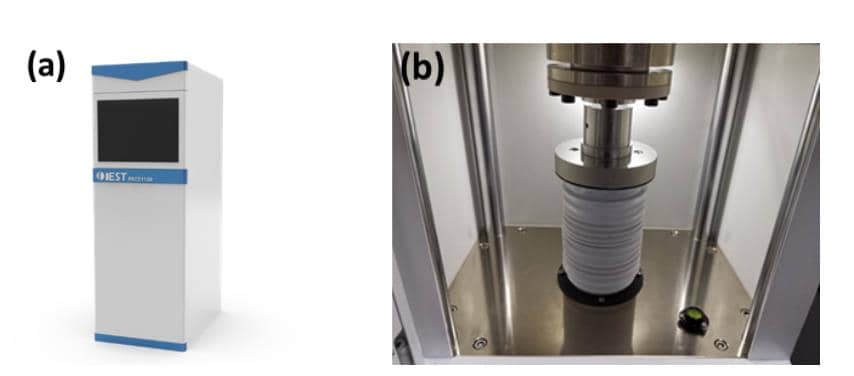-
iestinstrument
Characterization Method of Compaction Density of Cathode and Anode Electrode Materials for Lithium Battery
1. Enhancing Battery Energy Density Through Electrode Compaction Density
To improve the volumetric energy density of lithium-ion batteries, researchers typically focus on two key strategies:
-
Increasing the specific capacity (gram capacity) of cathode and anode active materials.
-
Increasing the compaction density of the electrode sheets.
The compaction density of an electrode is influenced by the true density of the active material, its morphological characteristics, particle size distribution, and the manufacturing process.
True density refers to the mass per unit volume of a solid material excluding any internal pores or voids—an ideal state of material packing. However, in actual battery cells, interparticle voids are inevitable. Controlling porosity through applied pressure is essential to balance electrolyte wettability with efficient electron and ion transport. Figure 1 illustrates how electrode particle packing changes before and after rolling, and why anode thickness measurement and compaction control are critical for high-energy electrodes.
Compaction density and true density often follow similar trends, making compaction density a valuable metric for evaluating the physical properties of electrode materials and monitoring batch-to-batch consistency.
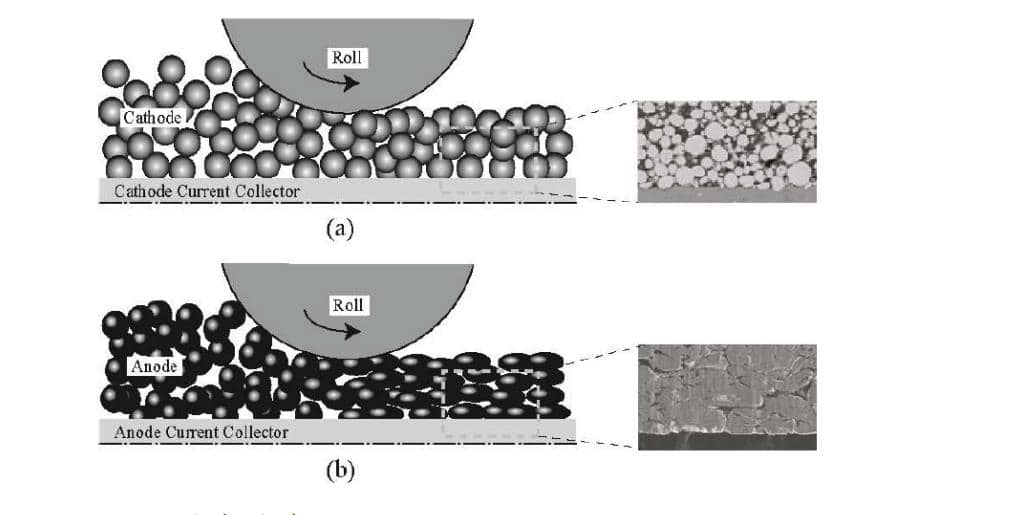
Figure 1. Schematic diagram of cathode and anode electrode plate rolling 1
2. How to Calculate the Compaction Density of Materials?
The calculation Rormula of material compaction density is as follows:

Where:
-
D = compaction density
-
M = mass of the powder sample
-
S = cross-sectional area of the containing fixture
-
L = thickness of the powder under pressure (Lc ) or after pressure release (Lr)
There are two ways to test the compaction density of powder: pressure method and pressure relief method. The pressurization method is to apply a certain pressure to the powder and hold the pressure for a period of time, and then test the powder thickness Lc for pressurization. The pressure relief method refers to that the powder thickness Lr is tested and released after a certain pressure is applied and held for a period of time, and then reduced to a lower pressure and kept for a period of time. Due to the elastic deformation of the particles and the slip between the particles, the Lr pressure relief is usually greater than the Lc, and the rebound amount of the powder compaction density can be calculated from the two.
Using the pressure relief method, the stress state of the powder particles is closer to that in the real electrode plate, so it has better reference significance. For example, the national standard GB/T24533-2019, graphite anode materials for lithium ion batteries” uses similar pressure relief method to test the powder compaction density 2.
3. How to Improve the Accuracy of Compaction Density Testing
Accurate compaction density and anode thickness measurement require careful procedure and instrumentation. Recommended best practices:
-
High-precision mass: Use an analytical balance with resolution ≥0.0001 g for sample mass (M).
-
Thickness resolution: Ensure the thickness gauge accuracy is ±5 µm or better; use high-precision displacement sensors for sub-micron needs.
-
Prevent powder loss: Verify fixtures are sealed and powder does not leak during loading—mass and thickness errors directly bias density.
-
Consistent packing: Pre-condition samples (e.g., standardized vibration or gentle tamping) so initial packing states are repeatable.
-
Report test conditions: Always publish sample mass, mold area, pressure profile, hold times and temperature for reproducibility.
-
Multiple replicates: Run several repeats and report mean ± standard deviation and COV to quantify variability.
4. Experimental Case: PRCD1100 Compaction Tests
4.1 Test Equipment
The PRCD1100 (IEST) was used to test the compaction density of five cathode and anode materials. The equipment is shown in Figure 2.
Figure 2. (a)The Appearance of PRCD1100; (b)The Structure of PRCD1100
4.2 Test Parameters
-
Pressure range: 10–200 MPa
-
Pressure increment: 10 MPa
-
Hold time: 10 s at each pressure step
-
Release pressure to 3 MPa and hold for 10 s
4.3 Sample Mass
-
Lithium cobalt oxide (LCO) / ternary (NCM): 2.0000 g
-
Lithium iron phosphate (LFP) / graphite: 1.0000 g
-
Activated carbon: 0.5000 g
5. Results & Discussion
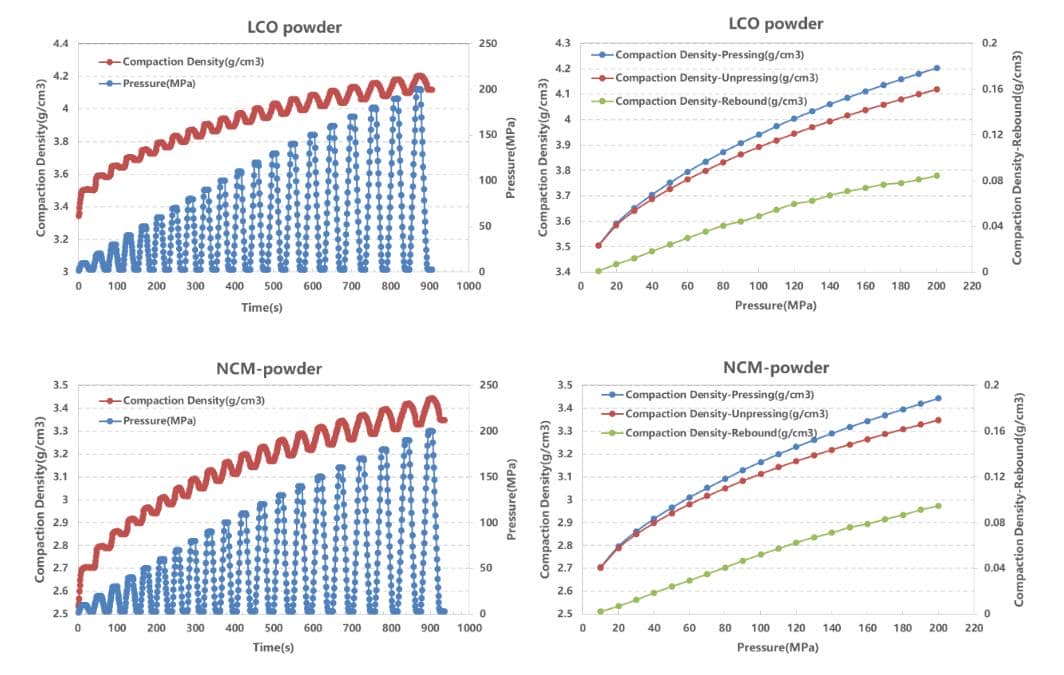
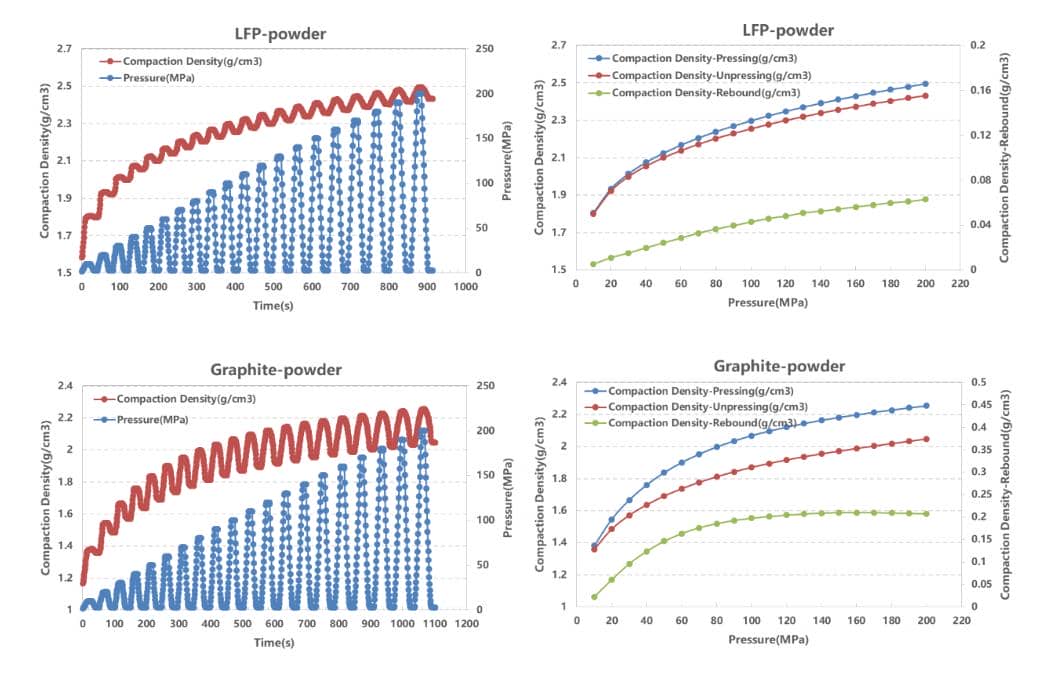
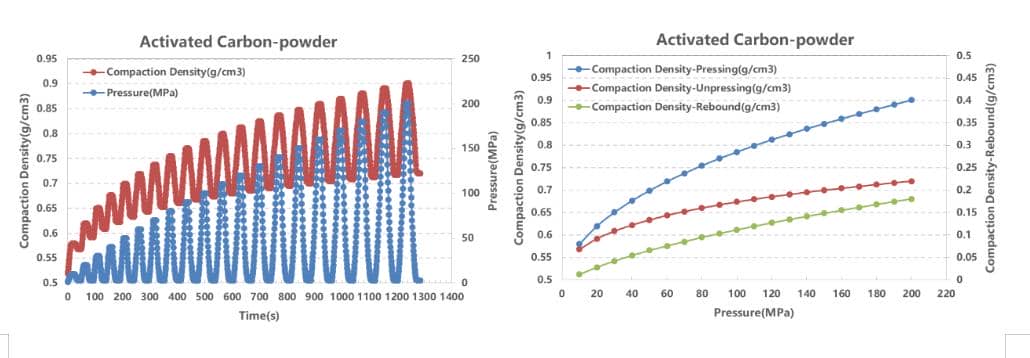

Figure 3. Compaction Density test Results for Five Different Materials
Figure 3 summarizes compaction density data across the five material systems. Key observations:
- The compaction density values of the five materials followed this order: LCO > NCM > LFP > Graphite > Activated Carbon
- All materials exhibited rebound after pressure release. The rebound magnitude was as follows: Graphite > Activated Carbon > NCM > LCO > LFP
Rebound behavior is closely related to material structure:
-
Graphite has a layered structure that allows interlayer sliding, leading to significant rebound.
-
NCM materials, with their nickel-cobalt-manganese composition, show greater elastic deformation than LCO due to structural differences influenced by nickel content.
-
LFP’s stable olivine structure, comprising Fe-PO₄ octahedra, results in minimal elastic deformation.
These results confirm that compaction density and rebound are influenced not only by the material system but also by particle size and distribution—a promising area for future research.
6. Practical Recommendations for Manufacturers & R&D
-
Use pressure-relief compaction protocols when optimizing calendaring conditions and forecasting real electrode thickness after assembly.
-
Combine powder-level compaction testing with anode thickness measurement on actual coated and calendared electrodes to close the loop between material properties and manufacturing outcomes.
-
For high-energy electrodes (e.g., silicon anodes), evaluate rebound and fracture risk at multiple pressures to avoid delamination or cracking during high-pressure calendering.
-
Report compaction test metadata with published data to enable inter-laboratory comparison and reproducibility.
7. Conclusion
Compaction density is a critical parameter in the development of high-energy-density lithium-ion batteries. This study demonstrates how material structure and particle characteristics influence compaction behavior and rebound. Accurate measurement—preferably via pressure-relief methods—combined with careful anode thickness measurement and process control enables rational selection of materials and calendaring parameters. Material-specific trends (e.g., graphite’s large rebound, LFP’s rigidity) must be accounted for when optimizing electrode stacks for high-energy lithium-ion cells. Future work should explore the effects of particle size distribution and morphological control on density of different materials to further enhance battery performance.
8. References
[1] Sang Gun Lee, Dong Hyup Jeon. Effect of electrode compression on the wettability of lithium-ion batteries. Journal of Power Sources 265(2014) 363-369.
[2] 《Graphite anode materials for lithium ion batteries》GB/T 24533-2019.
Subscribe Us
Contact Us
If you are interested in our products and want to know more details, please leave a message here, we will reply you as soon as we can.


